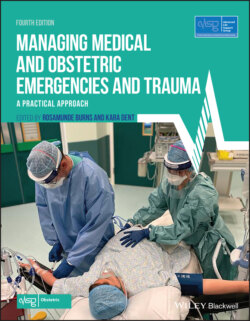Читать книгу Managing Medical and Obstetric Emergencies and Trauma - Группа авторов - Страница 70
Level 2 (So what? Interpreting the information)
ОглавлениеThis encompasses how someone’s understanding forms from what has been seen. To minimise level 2 errors consideration is needed as to how the human brain works, recognises things and makes decisions and choices. This level of detail is beyond the scope of this introductory chapter (for those who are interested in pursuing this further Safety at the Sharp End by Flin et al. (2008) is an excellent learning resource for the whole field of human factors in healthcare). Therefore this section will focus on a part of this – the decision making that leads into level 3.
On the face of it the practice of decision making is familiar to everyone. However, to understand the factors that can compromise this process it is important to understand the factors that will influence the decision made. To make a good decision a person needs to assess all aspects of a problem, identify the possible responses to the problem, consider the consequences of each of those responses and then weigh up the advantages and disadvantages in order to draw a conclusion. Having completed this, they then need to communicate their decision to their team.
Good situation awareness is a basic prerequisite of this process. To achieve this, the decision maker must ensure they have all the key information. In a well‐functioning team everyone is on the alert for ambiguities, biases or conflicting information. Any inconsistent facts should be treated as a potential marker for faulty situation awareness. It is important not to brush them off as unimportant anomalies in the absence of evidence to support such a decision.
In many clinical situations there can be a significant pressure of time. Where this is not the case then no decision‐making process should be concluded until the team is satisfied they have all the information and have considered all the options. Where time is a pressure, a certain amount of pragmatism must be employed. There is plenty of evidence to confirm that practice and experience can mitigate some of the negative effects of abbreviating a decision‐making process. Those making decisions under such circumstances need to remain aware of the short‐cuts they have taken and be ready to receive feedback from their team, particularly if any member of the team has significant concerns about the proposed course of action.
